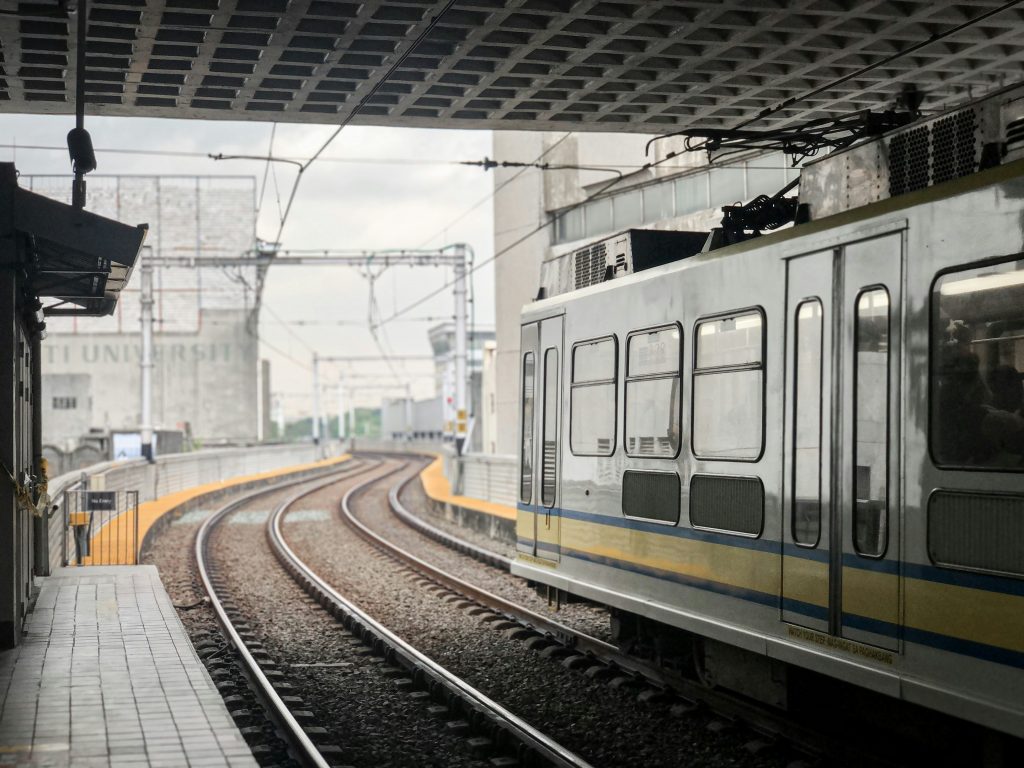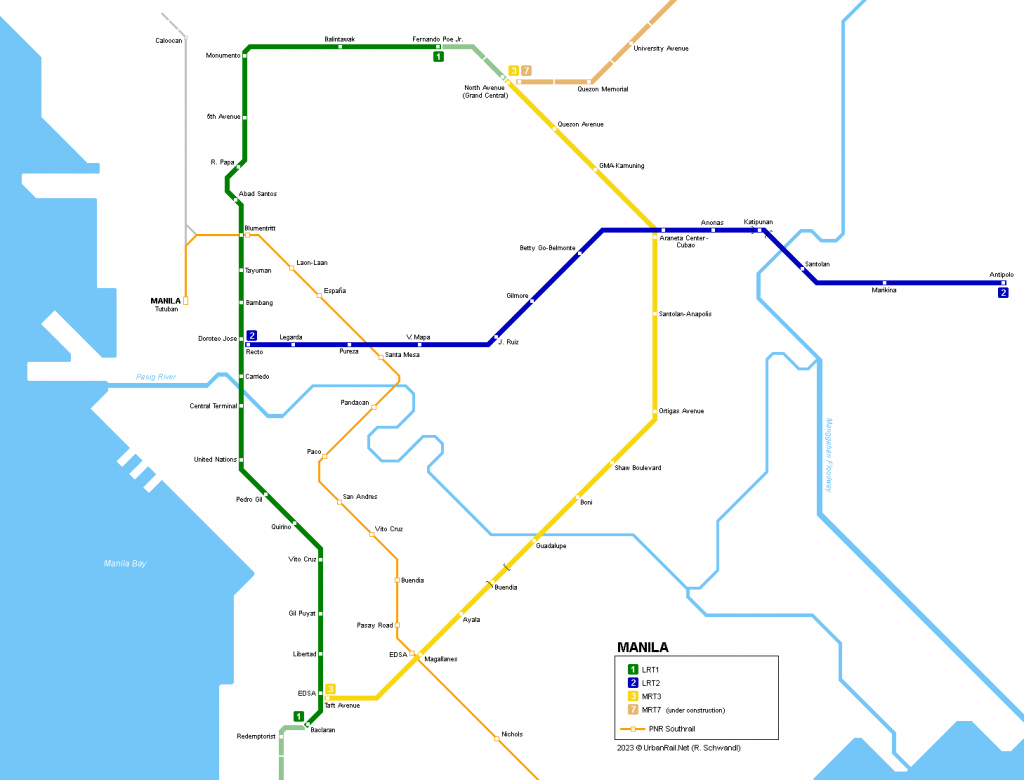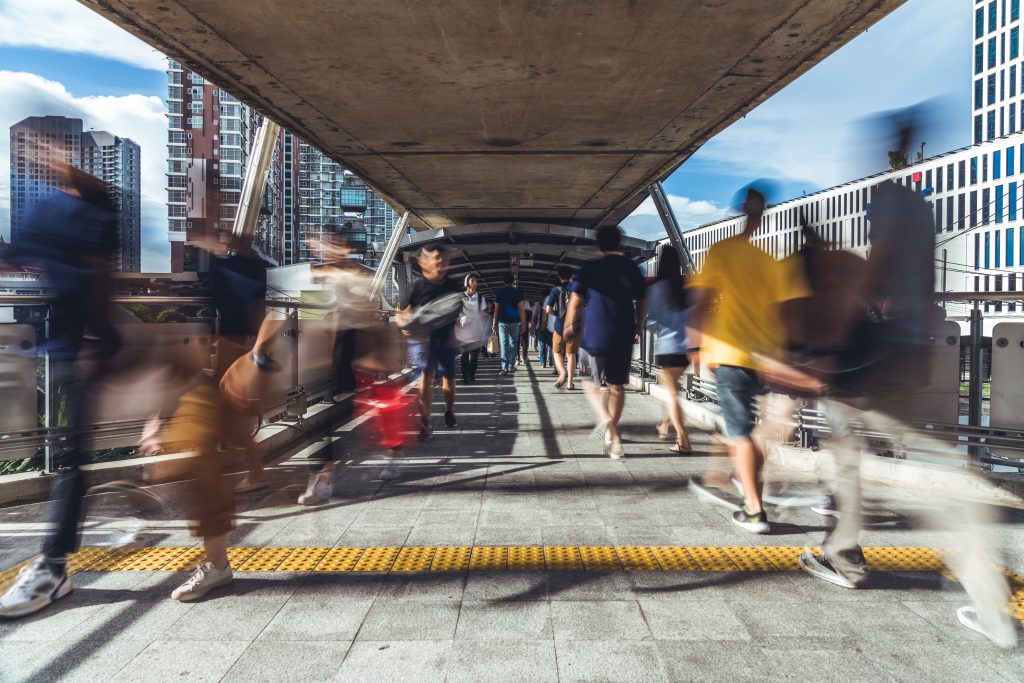Getting around the Philippines, especially during rush hour, can be tough. Epifanio de los Santos Avenue, or EDSA, is a prime example of this struggle. In cities worldwide, efficient public transportation systems are essential for smooth urban living, and Manila, as the bustling capital of the Philippines, is no different. Here, amid the hubbub of economic activity, a reliable mass transit system is not just convenient but absolutely vital. That’s where this LRT and MRT Station Guide comes in handy, providing crucial navigation assistance amidst the city’s bustling transportation network.

How many railways does Manila have?
With the exception of the Philippines National Railways (PNR) Station, Manila has three main rail lines that provide commuters with an efficient way to get about the busy city. These rail systems offer a quick and efficient way to go throughout the city, avoiding the severe traffic jams that occur on Manila’s streets.
How do you enter the LRT and MRT Stations?
Railway stations, like any other establishment, require entry through security checks. It is noteworthy that several goods are forbidden within the station premises. These items include sharp or blunt tools, flammable materials, hazardous materials, and odorous foods. Encouraging all passengers to follow these laws guarantees a smooth and safe travel experience.
Which destinations do the LRT and MRT lines cover?
LRT Line 1
With one terminal in northern Quezon City, the Light Rail Transit Line 1, or LRT-1, reaches Valenzuela, Pasay City, and Manila City.
Covered Areas
- North Quezon City
- Valenzuela
- Pasay City
- Manila City
LRT Line 2
On the other hand, LRT-2 serves portions of Quezon City and Manila City, which intersect with the LRT-1 and MRT-3 lines. An intriguing new development is the LRT-2 line’s eastward extension, which is currently operational and extends to Marikina and Antipolo.
Covered Areas
- Portions of Quezon City
- Manila City
- Marikina City
- Antipolo City
MRT
Lastly, the MRT-3 line, which runs the whole length of EDSA from Taft Avenue in Pasay City to North Avenue in Quezon City, is one of the busiest in Metro Manila. Important business districts, including Makati, Mandaluyong, and Ortigas, are traversed by this vital route.
Covered Areas
- EDSA
- Taft Avenue
- Pasay City
- North Avenue Quezon City
- Makati City
- Mandaluyong City
- Ortigas City
What is the difference between LRT and MRT?
The MRT (Metro Rail Transit) and the LRT (Light Rail Transit) are integral mass transit systems catering to the transportation needs of the National Capital Region (NCR). While both serve similar purposes, they do exhibit certain distinctions.
LRT and MRT Organizational Differences
The MRT, commonly referred to as the Yellow Line, is managed by the Metro Rail Transit Corporation (MRTC), a consortium of private enterprises. Oversight for this system falls under the purview of the Department of Transportation (DOTr).
In contrast, the LRT is under the sole ownership of the government, operated by the Light Rail Transit Authority (LRTA), and also overseen by the DOTr. Another distinction lies in the routes these rail networks follow. The MRT primarily traverses EDSA, essentially integrating with the thoroughfare as it runs along its median.
The LRT, on the other hand, runs two lines that serve different parts of the NCR. Line 1, also referred to as the Green Line connects the eastern part of Metro Manila from its northern to southern sectors and vice versa. Line 2, often known as the Purple Line, connects Metro Manila’s western districts to Antipolo in the east and back.
How to ride the LRT and MRT Stations
Via Ticket Booth
At the LRT and MRT stations, buy your train ticket. Depending on where you’re going, tickets cost between ₱13 and ₱28. You can choose between two tickets:
- A single-journey ticket (SJT) is good for a single journey and is only good on the day it is purchased. Before purchasing, let the ticket seller know where you want to go.
- The beepTM card, also referred to as a stored-value card (SVC), is a reloadable card that can be used for several LRT and MRT journeys. You can go straight to the automatic gate and avoid the ticketing line if you have this card loaded. ₱10,000 is the maximum load amount.
- To enter, just tap your card or ticket at the automated gate. Take the train to your destination, and when you get there, put your SJT into the gate opening if you have one. SVC users should press the gate to
Via Ticket Machine
Here’s how to purchase a ticket using the LRT and MRT Ticket Vending Machine (TVM):
Step 1
On the TVM screen, choose the type of ticket you wish to purchase.
Step 2
- For a Single Journey Ticket (SJT), select your destination and insert your bills or coins.
- For a Stored-Value Card (SVC), simply insert your bills or coins. Please note that the TVM does not provide change for SVC transactions.
Step 3
Press the Receipt button to obtain your ticket.
Step 4
Tap your ticket at the automatic gate to gain entry.
Step 5
Board the train. Alight at your destination station. For SJT users, insert the ticket into the gate inlet. If you’re using an SVC, tap the gate to exit.
What do the LRT and MRT Stations look like?

Complete List of Stations
LRT-1 Stations
- Baclaran
- EDSA
- Libertad
- Gil Puyat
- Vito Cruz
- Quirino Avenue
- Pedro Gil
- United Nations
- Central Terminal
- Carriedo
- Doroteo Jose (transfer available to LRT-2 Recto Station)
- Bambang
- Tayuman
- Blumentritt
- Abad Santos
- R. Papa
- 5th avenue
- Monumento
- Malvar
- Balintawak
- Roosevelt
LRT-2 Stations
- Recto (transfer available to LRT-1 Doroteo Jose Station)
- Legarda
- Pureza
- V. Mapa
- J. Ruiz
- Gilmore
- Betty Go-Belmonte
- Cubao (transfer available to MRT-3 Cubao Station)
- Anonas
- Katipunan
- Santolan
MRT Station
- Taft (transfer available to LRT-1 EDSA Station)
- Magallanes
- Ayala
- Buendia
- Guadalupe
- Boni
- Shaw Boulevard
- Ortigas
- Santolan
- Cubao (transfer available to LRT-2 Cubao Station)
- Kamuning
- Quezon Avenue
- North Avenue
Safety Guidelines for Riding the LRT and MRT
Stay Vigilant
Upon arrival at the station, maintain awareness of your surroundings. Beware of crowded platforms and watch your step while boarding the trains. Keep personal belongings secure to prevent loss or theft.
Familiarize Yourself with Emergency Exits
Take note of emergency exits and procedures at each station. In case of an emergency, knowing the nearest exit can be invaluable. Familiarize yourself with emergency contact numbers and be prepared to seek assistance if needed.
Mind the Gap
Exercise caution when boarding and alighting from the train. Mind the gap between the platform and the train to avoid accidents or injuries. Wait for the train to come to a complete stop before stepping on or off.
Queue Up Responsibly
While waiting for your turn to board, queue up in an orderly manner. Respect the designated lines and refrain from crowding or pushing. Maintain a safe distance from the edge of the platform.
Secure Your Valuables
Keep your belongings close and secure throughout your journey. Use bags with zippers or closures, and avoid displaying valuable items openly. Stay alert to your surround
dings to prevent theft or pickpocketing incidents.
Report Suspicious Activities
Stay vigilant and report any suspicious activities or unattended items to station personnel or authorities immediately. Your prompt action can contribute to maintaining a safe environment for everyone.
Practice Patience and Courtesy
Embrace a mindset of patience and courtesy while riding the LRT and MRT. Respect fellow passengers, prioritize safety, and contribute to a positive commuting experience for all.

The LRT and MRT serve as vital conduits that ease the everyday commute of a great number of people as we move through the busy streets of Metro Manila. But even with all of the efficiency and convenience that these mass transit networks provide, safety must always come first. We can make traveling safer and more enjoyable by following basic rules like being alert at stations, keeping our distance, and protecting our belongings. As we ride the LRT and MRT across the city, let’s embrace a culture of accountability and safety. Let’s work together to make sure that every ride is both effective and secure for every traveler.









